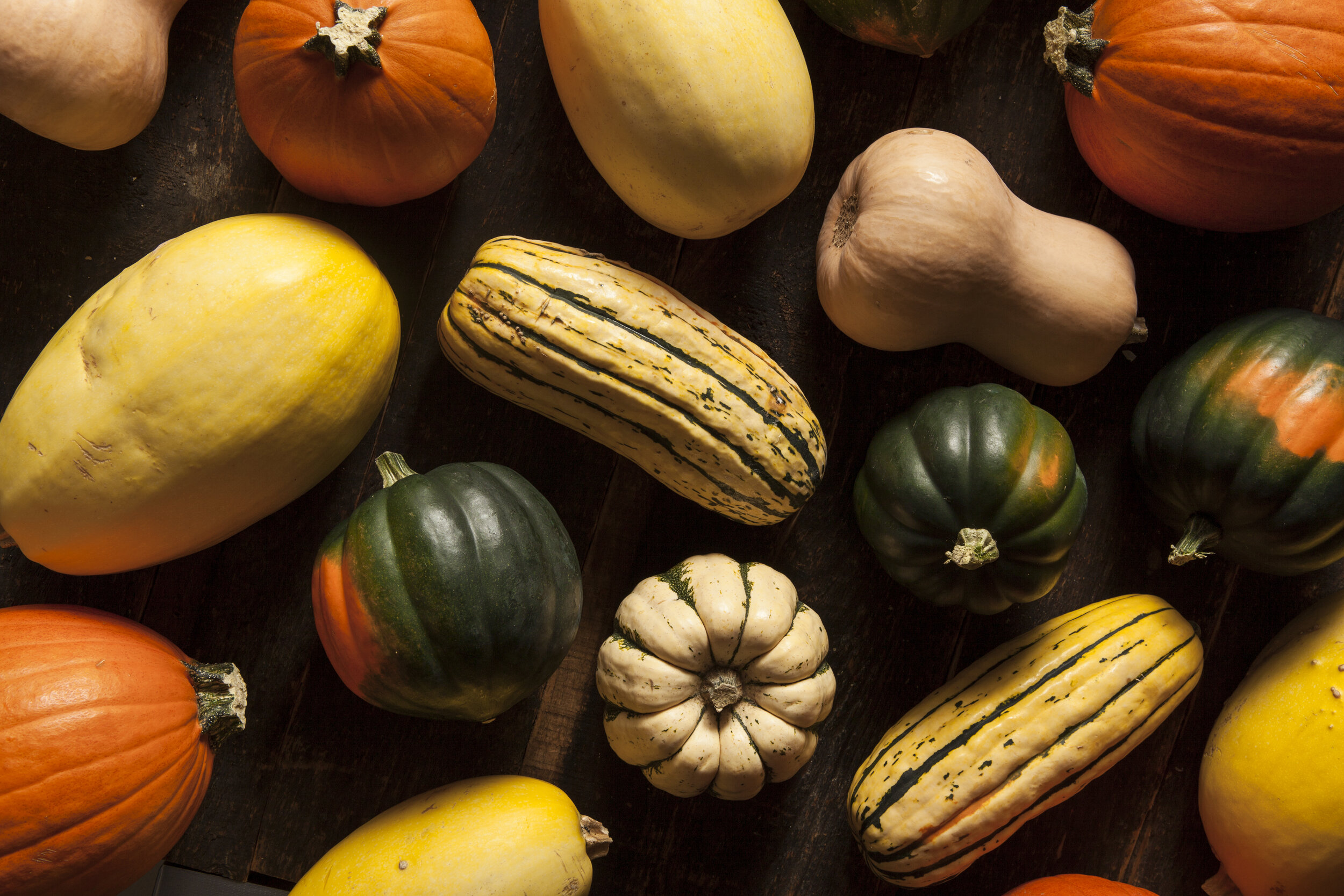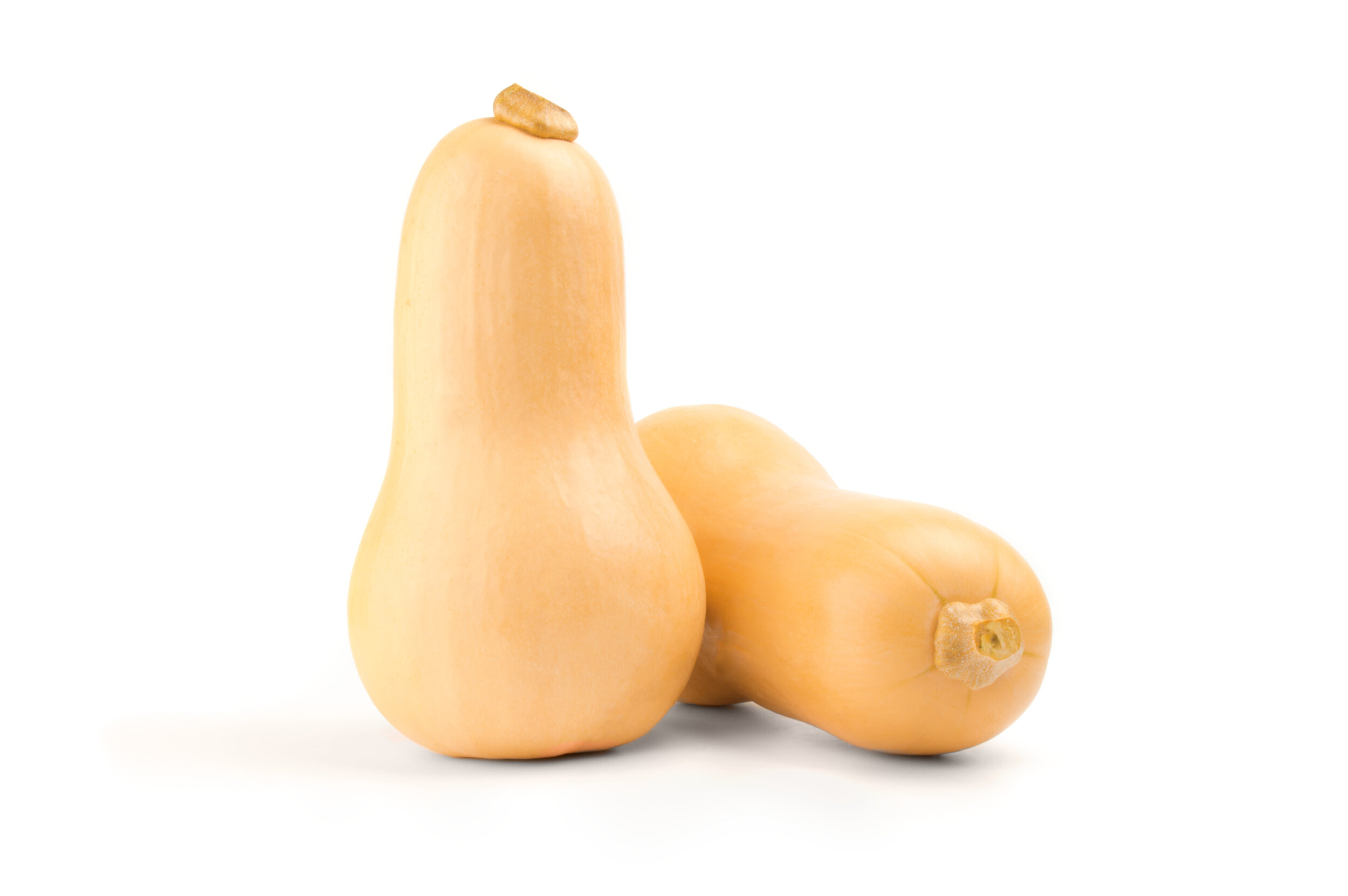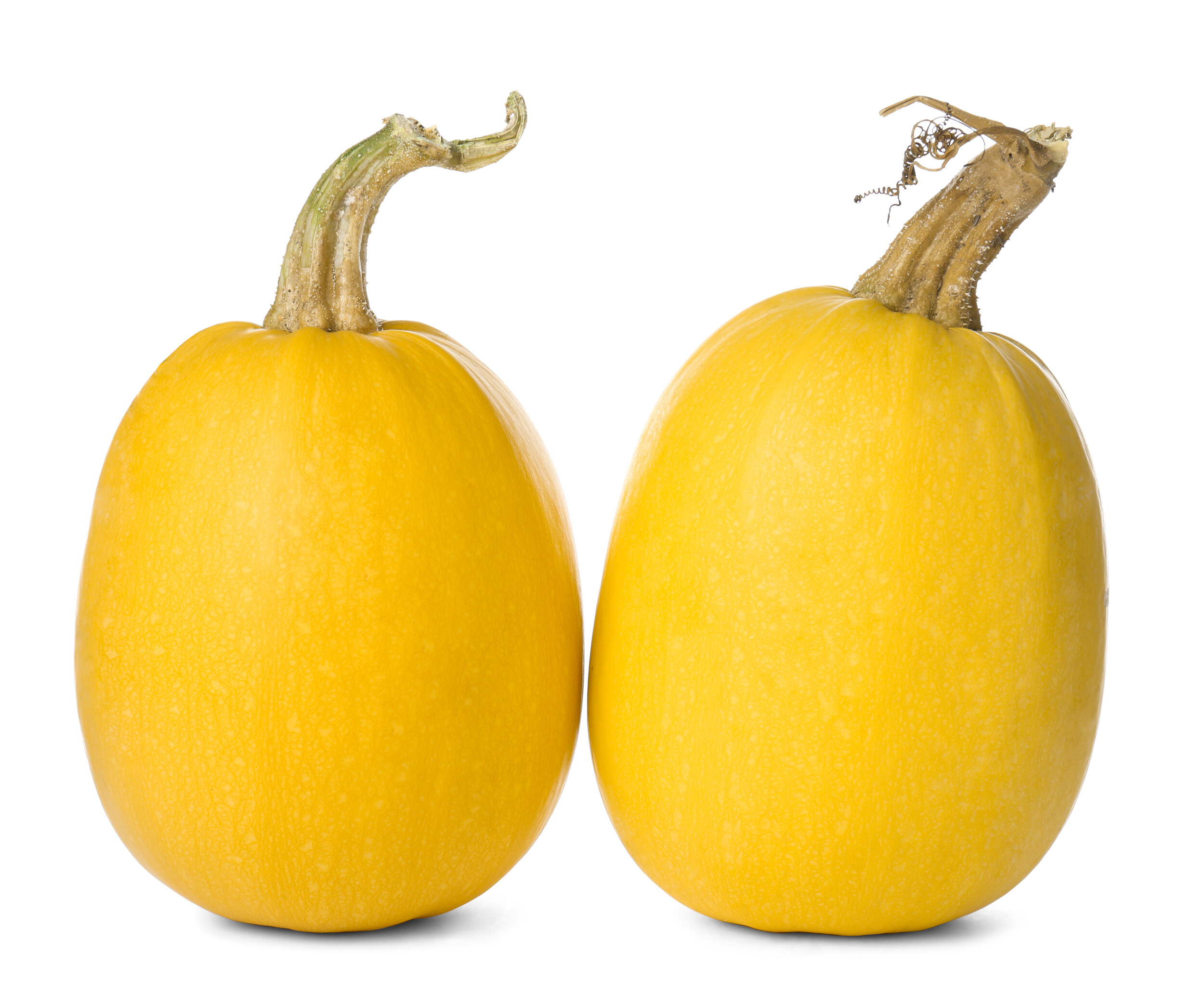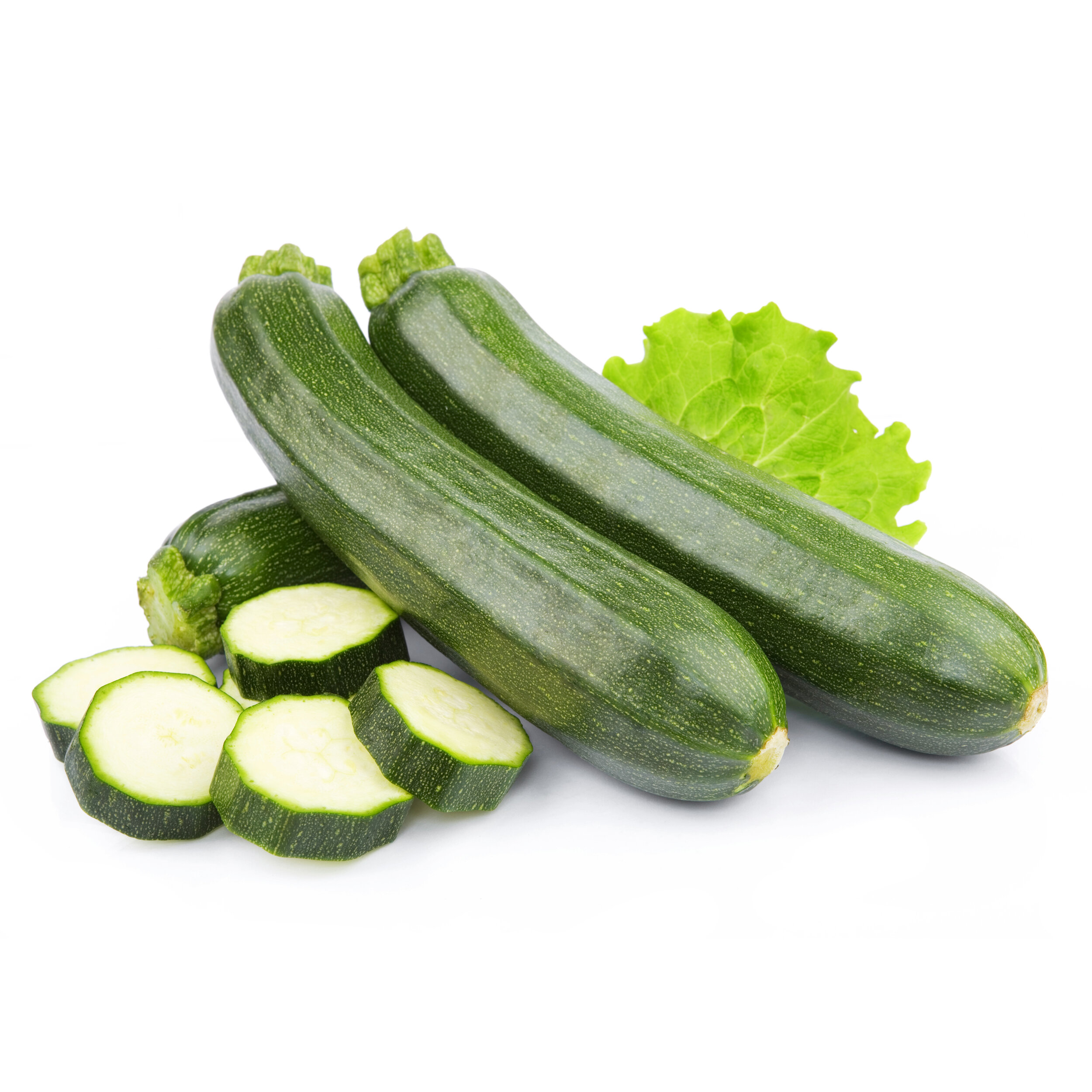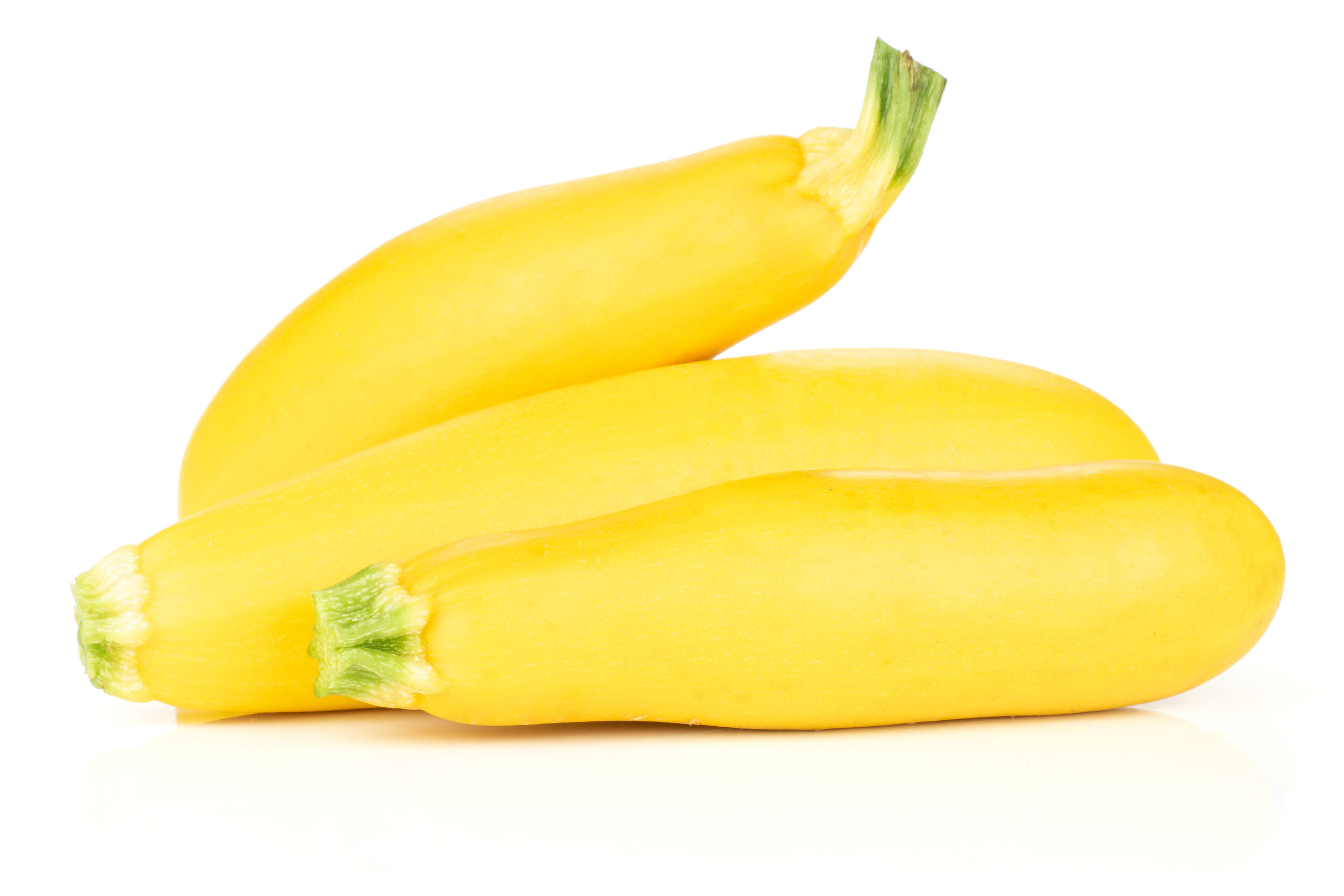Squashes
winter squashes
Acorn Squash
(Cucurbita pepo)
Is the most widely available of small winter squash and one of the most attractive, but it is one of the least likely to be rewarding. This medium sized squash has a deep green skin and an acorn shaped.
With a golden-orange flesh offers a slightly sweet and nutty flavor when cooked. Usually about five to eight inches long and four to five inches across, the hardy rind has deep, characteristic ridges with a splash of yellow gold, considered a sign of maturity.
Butternut Squash
(Cucurbita moschata)
Butternut squash is a winter squash. Considered an “all-purpose squash” in the best sense of the word. Tan-yellow skins and meaty orange-yellow pulp with a moderately sweet, nutty taste.
When ripe, it turns increasingly deep orange, and becomes sweeter and richer.
Butternut squash is a good source of fiber, vitamin C, manganese, magnesium, and potassium.
Spaghetti Squash
(Cucurbita pepo)
Squash Spaghetti squash are large, oblong in shape with smooth, pale yellow skin with slightly stringy noodle-like consistency flesh which when cooked has a texture and appearance like that of spaghetti. When cooked, translucent strings are of a tender texture and very mild slightly sweet, nutty flavor.An excellent alternative pasta.
summer squashes
Green Zucchini
(Cucurbita pepo)
Zucchini is the familiar dark green, straight cylindrical squash with glossy, smooth, dark green delicate skin and creamy white inner flesh with a seeded center.
Summer squash has a high-water content and thin edible skin. Zucchini is the most popular of summer squashes.
Yellow Squash
(Cucurbita pepo)
Also called summer squash, is an easy to grow medium-sized squash with a cylinder shape and golden yellow thin edible skin. It has a creamy white inner flesh with a firm yet tender texture and characteristic mild flavor that doesn’t require much cooking.
Harvested when immature, while the rind is still tender and edible.

